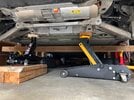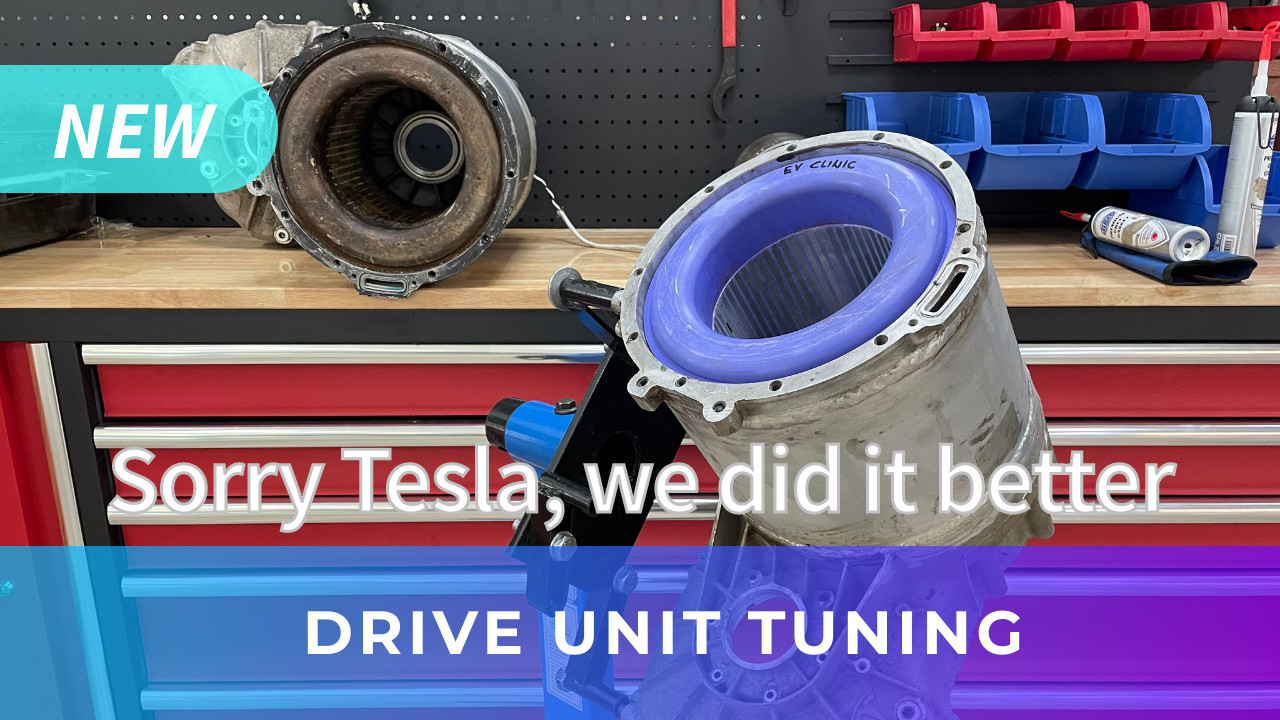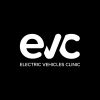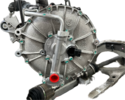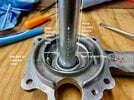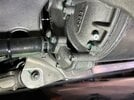LDU DIY Rebuild 2.0
Completed rebuild 2.0 after finding rust under seal after 4k miles on DIY rebuild 1.0. Here is a summary
Rust Under Triple Lip Seal
Half Shafts Here is how to get the half shafts in. If your parking brake is locked like mine, have to insert the gearbox end first. If insert hub end first, can not rotate shaft to engage spline on gearbox. Need to unhook wheel speed sensor wire to gain enough space to insert the half shaft...

teslamotorsclub.com
My best guess is originally manufactured LDU has anti-corrosion coating on the rotor shaft where coolant seal contacts. This coating was likely compromised during Tesla reman. There is a shallow groove channel on the shaft outside of where reman LDU seal makes contact. Presumably this groove was formed in the original LDU and Tesla reman doesn’t address reconditioning the rotor shaft back to original new spec.
I also lightly sanded the shaft surface with 600->1500 grit seeking to achieve a 0,20Ra finish for the seals. There were no visible materials taken off on the sandpaper nor did I dare to sand down enough to get rid of the above mentioned groove.
Anyway, unless the rotor shaft is pristine and without unknown reman handling, it is probably advisable to avoid triple lip seal.
Flame Spray Repair Rusted Shaft
Flame Spray basically shoot metal droplets onto the shaft to build up material. Then mill down to spec. This process leaves many micro porous holes which then need to be sealed (sealer + 200C cure) The flame spray shop didn’t mask off the shaft chamfer. This chamfer is critical to be smooth as it is a seal installation tool. In particular the PTFE seal lips which exert high force while cleaning this chamfer.
Therefore, flame spray repair alone appears insufficient. There is a Croatia EV rebuild franchise company demonstrating chrome plating.
One major concern is any flame spray or chrome plating shop aren’t experienced in LDU rotor’s high precision and detailed requirements. It is difficult to ask them to study in detail and do detailed work that isn’t part of their major business.
Read following posts on the last link
Solution for damaged rotor shafts
With a damaged rotor shaft (and failed flame spray repair) my rotor shaft isn’t much different than a rusty shaft from a salvaged LDU. Flame spray repair shaft looks nice to the naked eye but finger nail can feel the porous holes and microscope reveal many porous holes. The best solution so far is to use SKF speedi-sleeve along with SKF FKM seal. One person has 15k miles on this solution and counting.
SKF speedi-sleeve will not cover the entire rotor shaft region so triple lip PTFE seals use is not possible. Sleeve also has a somewhat sharp edge which makes installing a single lip PTFE seal risky. One idea is to smooth that edge by painting with nail polish just to enable PTFE seal installation without damage. For elastomer seals such as FKM, a light coat of silicone grease is fine. Probably even dry install is fine.
I chose speedi-sleeve with FKM seal.
Some Additional Things Learned on rebuild 2.0
Reman LDU Inverter Stripped Bolt Holes
Tesla Reman stripped 3 of 6 outer inverter mounting bolts. The design has very small margin and T40 bolt tool will be tilted due to inverter side walls. Very easy to strip.
2012 P85 #2446 w/130k miles. 2d owner. Bought last Fall from original owner for $27k. Appears to be on original drive unit. All figures in USD. Since ownership, got BMS_u029 alert 3 days after purchase. Paid $15k for NEW 2022 build replacement pack (got lucky and Tesla honored $15k for reman...

teslamotorsclub.com
Also read post #19 and #20.
Jacking Up the Rear to put on Stand
I now do a 3 step process (no lift)
- Drive up a shallow ramp on top of 2x8 wood piece to gain clearance to remove the aero shield.
- Remove aero shield under the LDU
- Jack up by beefy parts of the rear subframe. The frees the rear lift point for placing stand
View attachment 974271
Primary Shaft Spline Grease
Confirmed with professional LDU rebuilders just use any high temp good quality grease. Probably something with similar viscosity. Tesla as usual has a PN for the grease but not for sale.
Eliminate Rotor Cooling Completely?
There seems to be some potential for eliminating rotor cooling with coolant (or anything at all) Tesla parts catalog has a “coolant DELETE manifold” listed for $0.01. Tried to order but was unavailable.
Also recently heard from a Polish owner claiming a local EV repair shop has done multiple LDUs with modified manifold to skip coolant cooling of rotor.
Will post more as I find out more.



